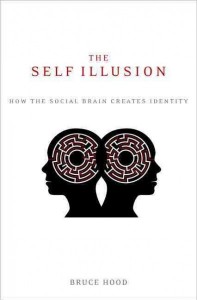For the knowledge “Tat Tvam Asi – Thou art that”, espoused by the Vedas, to become “Self-Knowledge”, tradition says we need to hear it from a Guru. It is important to understand why we do need to hear it only from a Guru. Will not text books, audio recordings, internet and such other facilities do? Even if I were to surrender to the traditional advise how do I know who a Guru is? Where will be come from? How do I identify him to be the one?
 गुकारस्त्वन्धकारोवै रुकारस्तन्निवर्तकः। अन्धकारनिरोधित्वात् गुरुरित्यभिधीयते॥
गुकारस्त्वन्धकारोवै रुकारस्तन्निवर्तकः। अन्धकारनिरोधित्वात् गुरुरित्यभिधीयते॥
gukārastvandhakārovai rukārastannivartakaḥ| andhakāranirodhitvāt gururityabhidhīyate||
The word Guru is formed from two roots, Gu, and Ru; Gu stands for darkness and Ru stands for removal of that darkness. The person who dispels one’s darkness (ignorance) and leads one to light (knowledge) is called a Guru. Only such a person, who gives one self-knowledge, can be called a Guru; none else. Contemporary phrases such as “Management Guru” are extensions of this understanding, however I deem them to be inappropriate.
The next question that naturally arises is how do I know that this given person is my Guru.
तद् विज्ञानार्थं स गुरुमेवाभिगच्छेत् समित्पाणिः श्रोत्रियं ब्रह्मनिष्टम्॥
tad vijñānārthaṁ sa gurumevābhigacchet samitpāṇiḥ śrotriyaṁ brahmaniṣṭam||
The upaniṣad uses two adjectives while referring to a Guru, Śrotriya and Brahmaniṣṭa. A Śrotriya is one who has learnt the wisdom of the Vedas from another Guru who, in turn belongs to the Guru Śiṣya Parampara. A Brahmaniṣṭa is one who, having gained the knowledge, has made it his own and revels in it. Of these two adjectives, it takes another Brahmaniṣṭa to know one of his own kind; a student is unqualified to make that conclusion. This is the truth; all indicators currently used to identify a Brahmaniṣṭa are motivated and only serve to claim their own leader to be a Brahmaniṣṭa, and that’s precisely why we see so many leaders with diagonally opposite characteristics confusing the day light out of our wits. Therefore, it is the Śrotriya that a student should seek; and his Parampara should vouch safe for his qualification to be a Guru.
Now to the question of why should we hear it only from a Guru. Here is why. To understand a single word of a given upaniṣad, mere knowledge of Sanskrit or just that upaniṣad, is not sufficient; but that of the entire śāstra, is required. However, knowledge of the whole śāstra, is gained only word by word; how does one break this catch-22? The Guru Śiṣya Parampara provides the answer, for, when you hear it from a Guru, you hear the meaning of a given word from the one who knows the whole. That Guru, as a student, would have heard it from his Guru, who knows the whole, and so on. What about the 1st Guru, the ādi guru? He is none other than Sadāśiva or Nārāyaṇa, whose nature is “All Knowledge” and hence do not need a Guru.
Vedanta is like Mathematics. 1+1 should always yield 2, irrespective of which part of the globe you are taught, which language you are taught in, who teaches you, or what time it is. Knowledge we have seen already is vastu tantram – so there should only be one answer, one solution, like even in Mathematics; yet there seems to be many schools of thought, opinions and conclusions. A proper teaching methodology, that’s time tested and proven, will resolve this conflict. This is what an aspiring student should opt for, for this is not only the surest method, but the only one to gain self-knowledge. More on this later.
It should be evident by now that this knowledge cannot be gained from mere textbooks, for, our prejudices will interfere with the purport of the words. Constant and consistent interaction and clarification with the Guru is required in order to grasp the intended meaning.
Lastly, how do I come across this Śrotriya who has the proper methodology to teach. That is just by Īśvara‘s grace; to get that grace, sincere Prayer is the only way.




